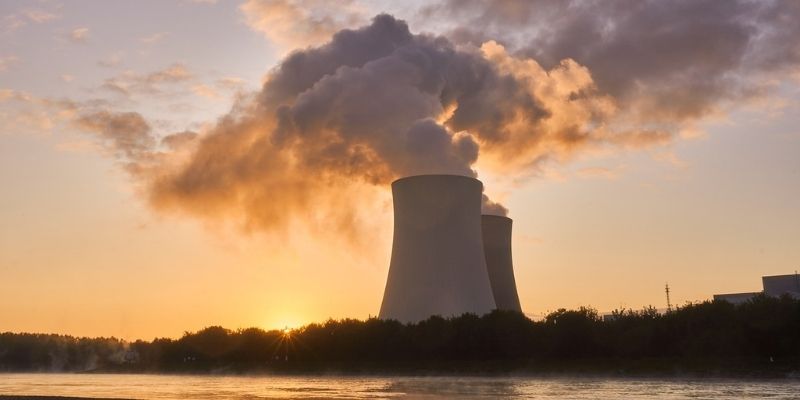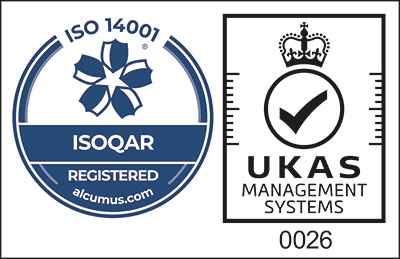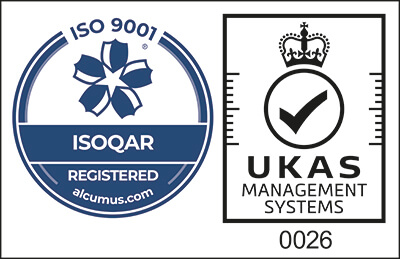
Cooling towers are useful solutions cost-effective and energy efficient systems that are slowly becoming a ubiquitous part of the UK landscape. They are typically constructed for HVAC (Heating, Ventilation and Air Conditioning) and industrial purposes for maintaining water temperatures. Examples of where they excel are: large office buildings, schools, airports and hospitals where there is a need to have a reliable source of cool water all year round. However, cooling tower maintenance is something that often gets overlooked which could be detrimental to the function of these nifty devices. As such, this article will discuss:
- What is a cooling tower?
- How does a cooling tower work?
- Cooling tower maintenance – Why you should clean your cooling tower
What Is A Cooling Tower?
For some of you reading, you may be asking yourself “What is a cooling tower?” which we will discuss below.
Cooling tower structures vary greatly in size and design and are not always the large scale cylinder like structures you see across the nation. With this in mind however, they all function to provide the same thing; the liberation of waste heat extracted from a building system through evaporation of water. Some of the main properties cooling tower possess of are :
- Electrical systems – Fan motors
- Cooling tower nozzles/valves
- Drive shafts
- Heat exchanger
- Supportive systems – Fan deck
- Recirculating water pumps
- Drift eliminators
- Cooling tower fill
- Cold water basin
As you can see there are a lot of technical and specialised materials that are required for the successful operation of a cooling tower. As such, it requires expert-led maintenance procedures to ensure safe, efficient, and reliable operation of the cooling towers.
How Does A Cooling Tower Work?
Now that we know what a cooling tower is, you may be asking “How does a cooling tower work?”. Industrial structures such as power plants use a lot of water to power some of their machines. When the water is heated, the volume of water expands and turns to steam. This then generates high pressure which can be used to continuously drive machine pistons back and forth causing them to operate. However, eventually this process needs to be cooled down otherwise you run the risk of overheated and damaged equipment. This is why cooling towers are needed to be constructed to prevent this from happening.
Firstly, hot circulating water is pumped into the cooling tower through a hot water pipe. It is then sprayed out through the nozzles to increase the surface area of the water to improve heat transfer.
The cooling tower fill material slows the falling water to allow for more heat transfer and is utilised to put as much water surface area in contact with as much air as possible.
After being heated, the circulating water collected in the basin is pumped back to the condenser in the plant.
The cooling process occurs by air passing through the cooling tower. Cool air is drawn in through an open area on the bottom of the cooling tower and passes up around the falling water, removing heat from the water in the process. The heated air then continues up through the tower, exiting at the top into the Earth’s atmosphere.
Sometimes a fan is also installed at the top of the water cooling tower to speed up the process of shifting air from the bottom of the tower to the top of the unit.
Cooling Tower Maintenance – Why You Should Clean Your Cooling Tower
Too close this article, we are going to discuss why you should utilise cooling tower maintenance procedures. As stated earlier, cooling towers require expert maintenance to ensure that they display high efficiency and reduced downtime. However with this in mind, there are a few cooling tower maintenance precautions to take into consideration for continuous and safe operation of these devices. Some of which are:
- Corrosion
Corrosion in any cooling system can lead to many expensive repairs if not treated or troubleshooted quick enough. Corrosion occurs when certain contaminants in the water such as oxygen and carbon dioxide cause the metal to degrade and return to its oxide state. Similarly, microbes containing certain bacteria can corrode metal and even concrete. Calling for regular checks with cooling tower or water tank cleaning experts like the ones here at Covac is highly recommended to minimise corrosion of your appliances.
- Scale Deposits
Because cooling towers work using evaporation, there is naturally a build-up of scale deposits which need to be removed. These deposits are caused by the minerals in the water which can vary in severity. For example, Limescale can build up and decrease both the efficiency and performance of your system so it is important to keep this to a minimum.
- Microbiological Activity – Legionella
Correct maintenance can prevent airborne diseases accumulating in cooling towers. One disease in particular to be wary of is Legionella. Preventing Legionella in cooling towers is a vital part of protecting the health and safety of employees and visitors in the building in which the cooling tower operates. As such it is important to monitor microbiological activity in your cooling tower and perhaps consider calling a professional to deal with your microbiological activity concerns.
- Longevity And Cost Effectiveness
A cooling tower that is cleaned regularly will last longer and function better. This is because many of the previous considerations can be eradicated which as a result can cause cost savings and increased efficiency due to fewer repairs of the cooling tower. By utilising industrial cleaning services here at Covac, the long-term health and safety of your cooling tower and large scale devices can be maintained.
If you are interested in a cooling tower cleaning service or any water tank refurbishment, please get in touch! Give our head office a call on: 01455 556 631 or alternatively email us: info@covac.co.uk










